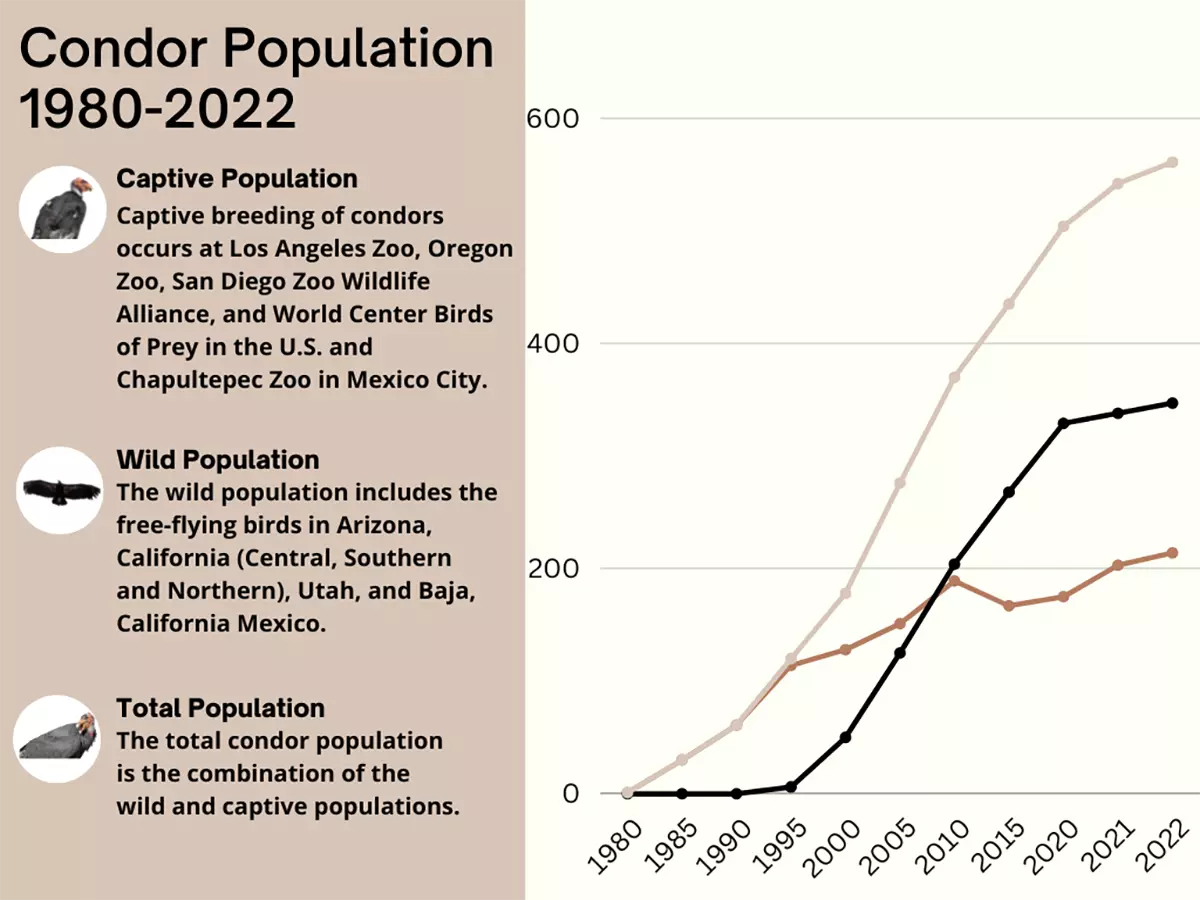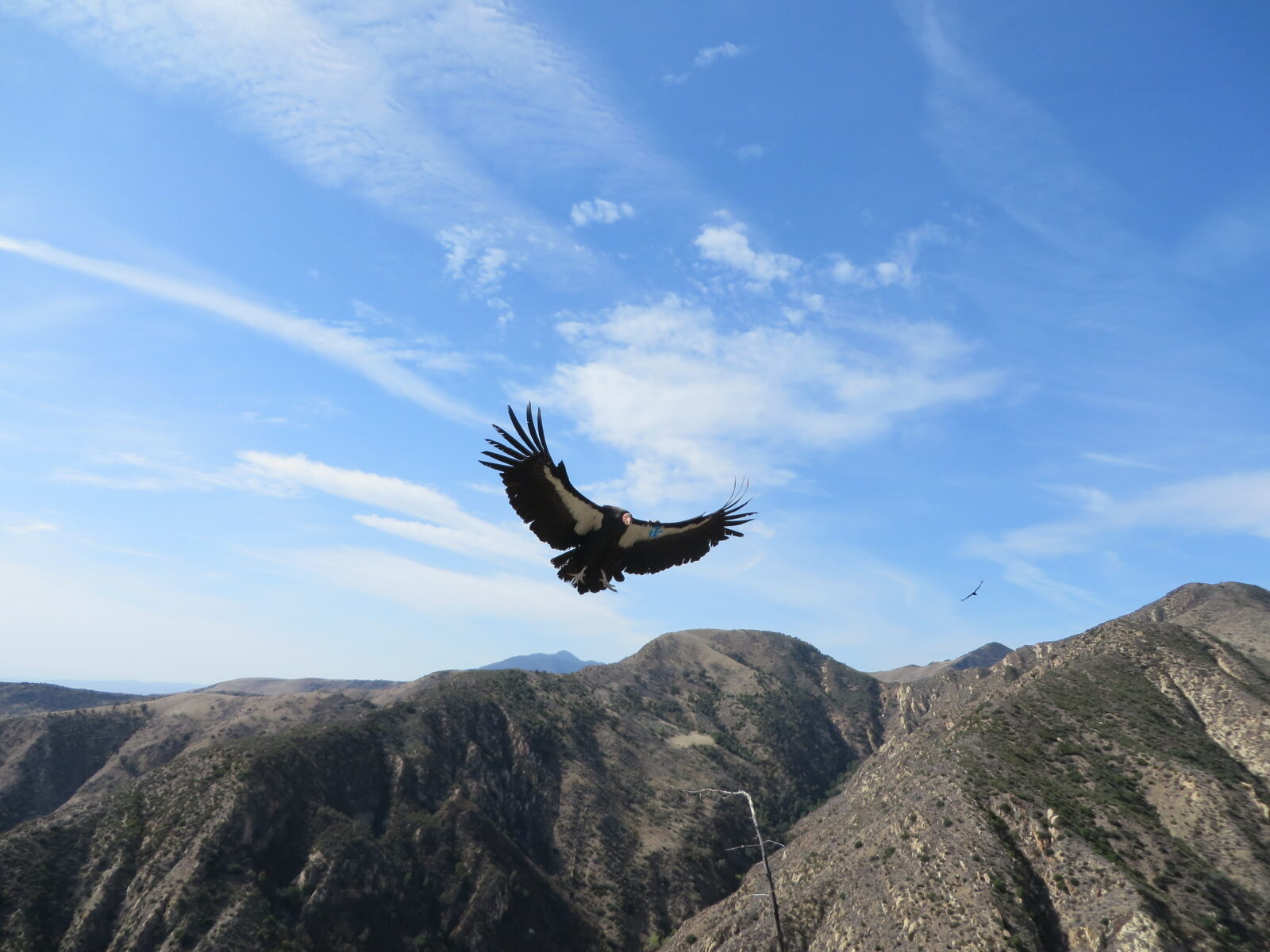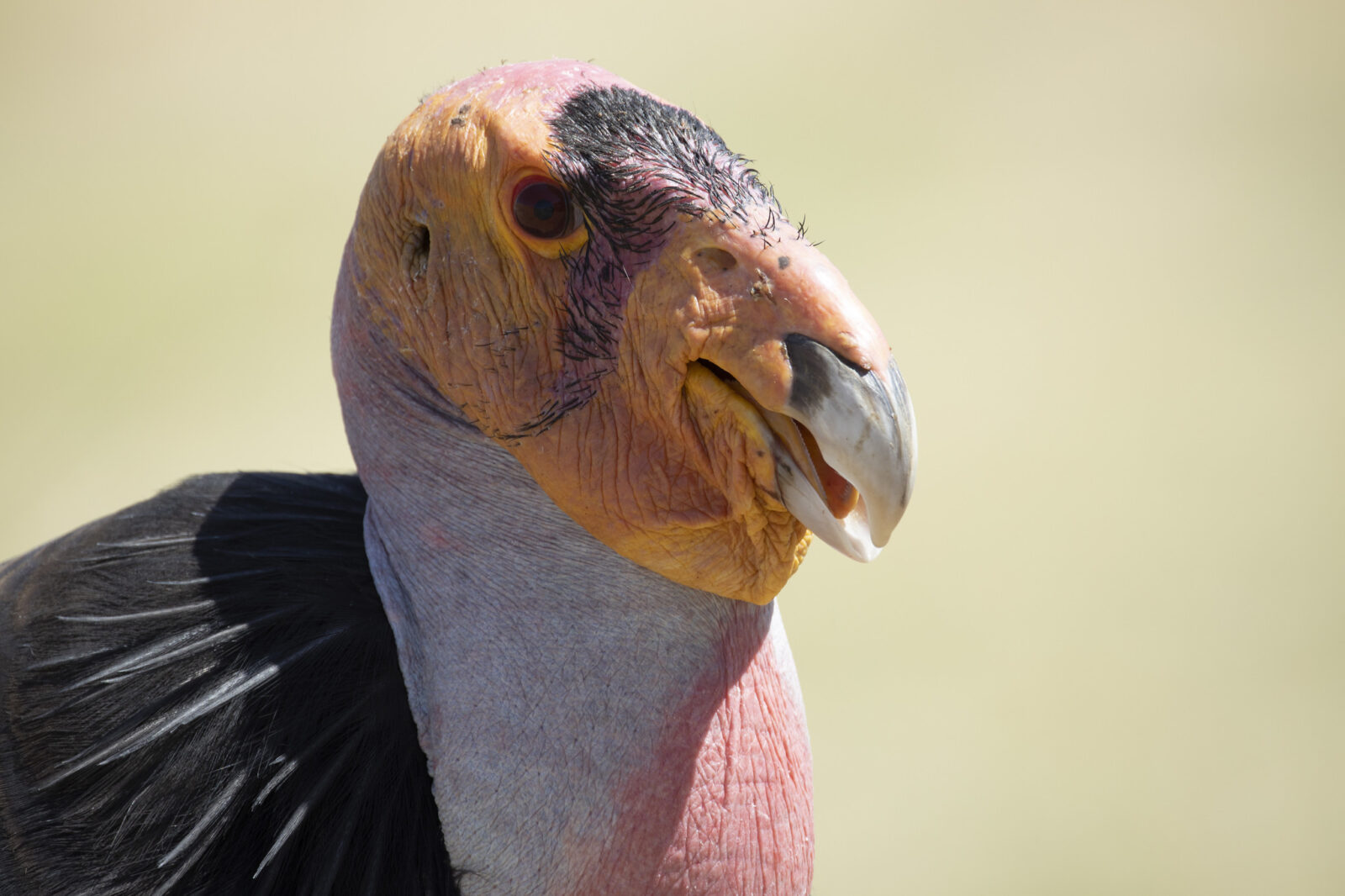Condor number 1139 gawked at his enclosure’s open door, seemingly unsure what to make of it. He hesitated for several minutes. Then he stepped into the threshold, stretched out his nine-foot wingspan, and clumsily flapped a few feet down to the ground.
“Sometimes they go right out, sometimes they don’t. We’re on condor time,” said Joe Burnett, condor program manager at the Ventana Wildlife Society, which operates the central California condor release site, nestled in the mountainous chaparral along the coast.
On Tuesday, 1139 and five other juvenile California condors that received the avian influenza vaccine took their first flaps out of captivity from a release site at San Simeon on California’s Central Coast. This year’s rookies are the first birds in the U.S. to receive vaccines against the latest strain of avian influenza, which has devastated bird populations across the globe and killed at least 8,000 recorded wild birds across the country. Vaccinating captive-bred condors is the latest conservation effort in the decades-long quest to save the iconic endangered species from extinction.
“In the 26 years I’ve been doing this, I really haven’t been more nervous than this year, because of the combination of lead poisoning and avian influenza,” said Kelly Sorenson, executive director at the Ventana Wildlife Society, a local raptor conservation nonprofit.





An enormous amount of time and expense has gone into the captive condor breeding program. Above, young condors from egg through an awkward day 70 from the archives. (US Fish and Wildlife Service; public domain)
Bird flu has hit these birds hard
California condors nearly went extinct a few decades ago, but have been recovering with close medical supervision and captive breeding programs. While the overall California condor population has rebounded back to over 500 individuals total, they are split between captive birds and wild flocks in northern, central, southern and Baja California, as well as Arizona. However, lead poisoning from ammunition in carcasses that condors scavenge and other threats continue to thwart conservation efforts. Condors are social creatures, living in elaborate hierarchies and gathering in groups to roost, feast upon carcasses, and groom each other—which can contribute to spreading the avian influenza virus.

Last spring, 21 condors in the Arizona flock—nearly one-fifth of it—died from avian influenza over three weeks. Condor conservationists feared another outbreak could be catastrophic. In the spring of 2023, the US Fish and Wildlife Service applied to the US Department of Agriculture for emergency approval of a vaccine that could offer condors some protection.
“No birds have ever been allowed to be vaccinated in the United States before—poultry or otherwise—because there are a lot of trade implications for agriculture,” said Samantha Gibbs, lead veterinarian for the Wildlife Health Office at the US Fish and Wildlife Service. (Allowing avian influenza vaccinations in poultry could provoke bans on exports to other countries, mostly due to fears that vaccination could mask the presence of the disease.) “To my surprise, they said yes.”

Vaccine trials for an endangered species? Tricky
Pharmaceutical companies and the USDA develop vaccines for animal diseases like avian influenza behind the scenes, just in case they have to use them, according to Gibbs. The vaccine given to condors this year was made from a strain of avian influenza that ravaged the poultry industry in 2014–2015, and it was already in the USDA’s stockpile.
But the company that developed the vaccine, Zoetis, designed it in case of demand for domestic and zoo birds, not wild or endangered species. To make sure this vaccine was as safe as possible for condors, US Fish and Wildlife Service scientists first tested it in black vultures, which are closely related (California condors are a kind of vulture).
Then condor trials began. One group of condors received a single dose, while another group received two half doses three weeks apart. According to preliminary results from the trial, 60 percent of the condors given two separate doses made enough antibodies to be somewhat protected from dying from the virus, and 10 percent made enough antibodies to be fully protected. In normal vaccine trials that do not involve an endangered species, the vaccine recipients are infected on purpose afterwards to test how much it protects them from sickness and death.
“For obvious reasons, we’re not going to do that with the condors,” said Gibbs.
Without that ‘challenge trial’, the vaccine’s effectiveness will essentially be tested in the wild. Condor conservationists will have to wait and see whether any of the vaccinated condors become sick or die.
As of the end of November, 16 vaccinated captive-bred condors have been released throughout California, with more on the way. The decision to vaccinate all the captive-bred condors before releasing them was based on the preliminary antibody level trial results; the full results of the trial are still pending publication. Vaccinating wild birds remains up in the air, since capturing condors multiple times to give them boosters at specific intervals would be a major logistical hurdle.
“We’re working on vaccinating the birds that are in the zoos, and trying to get as many of the free-flying birds vaccinated as we can,” said Gibbs. “But vaccination is not a silver bullet.”
While the preliminary results of the trial were promising enough to make trying it worth a shot, Gibbs remains skeptical of how much protection the vaccine will actually provide. The vaccine is unlikely to keep condors from becoming infected if they are exposed to the avian influenza virus, but—like the human coronavirus vaccines—might at least decrease the chances of dying from that infection. Long-term effects of the vaccine are still unknown, but it has shown no ill effects in the black vultures or condors that have participated so far.
Into the wild they go. Don’t laugh
In San Simeon, a welcoming committee of a couple of adult wild birds poked about down the grassy slope from the open pen, gathering to tear at a stillborn calf carcass that conservation crew members had dragged out to a strategic spot the night before. The carcass would lure the rookies out of their pen—and attract wild adults who could help them integrate into wild condor society.
After watching condor 1139 feed on the carcass for a while, other rookies followed him out of the pen to join the group meal. Forty-five minutes later, only two condors remained perched inside, taking their sweet time. While these captive-bred condors had been acclimated to the local area and socialized with each other, they’d still have to learn how to roost and fly long distances.
“It can be rather comical when they first go out,” said Kara Fadden, one of the Ventana Wildlife Society condor biologists who oversaw the San Simeon release. “They’ll land on the tiniest twig on a tree, thinking it will support their weight. It’s a steep learning curve.”
It takes about a month for captive-bred condors to build their flight muscles and learn the basics of roosting and finding their own food. The crew will provide supplementary carcasses and keep tabs on the rookies with GPS and radio tracking. Once they’ve gained confidence and strength, this year’s central California rookies will be able to fly as many as 100 miles per day, likely roaming among the steep slopes of Big Sur and the rocky outcroppings of Pinnacles National Park. Other groups of captive-bred, vaccinated condors were released from southern and northern California sites earlier this month. More are slated to fly off from San Simeon on December 12, and another batch of rookies will be released into Arizona in early 2024. With antibodies from the vaccines in their bloodstream, researchers and conservationists hope they’ll have a better chance of surviving another avian influenza outbreak.
“If it provides any level of protection at all, we should do it,” said Sorenson.





